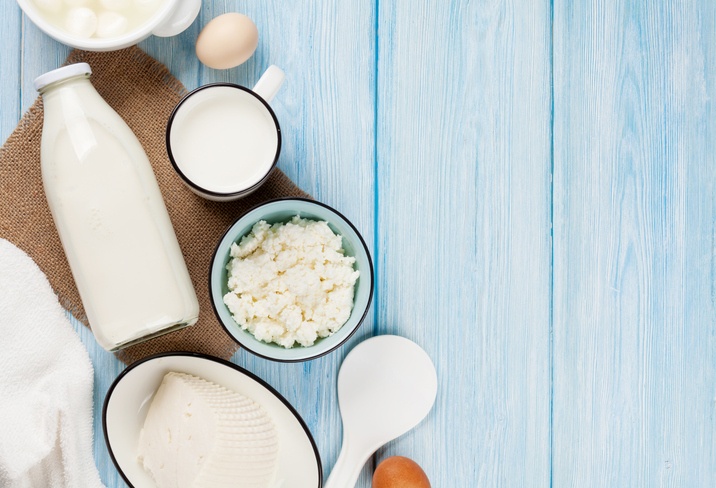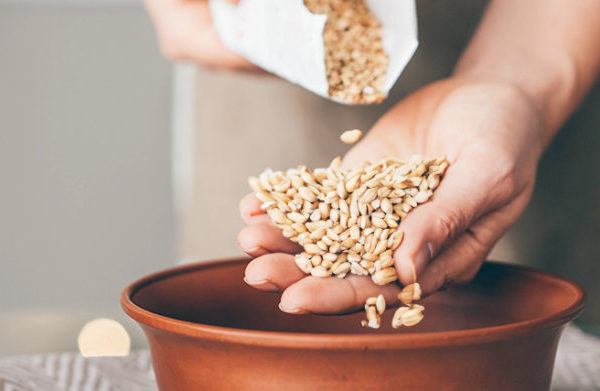
8 reasons to follow a dairy free diet
The Nutritional Expert at SHA Wellness Clinic, Lola García, shares the reasons to follow a dairy free diet!
Since the moment we are born we are told that we should drink lots of milk and have lots of dairy products to grow, have strong bones and vibrant health. Our parents, our teachers and the doctors recommend, or rather they insist, that milk and dairy products must be an important part of our diet. Many people have echoed this message about drinking and eating these products every day, however, your health isn’t that vibrant and your bones have increasingly less bone mass. In fact, it has been demonstrated that the countries in which the highest percentage of dairy products are consumed (USA, England, etc.) have the highest levels of osteoporosis in the world. This is normal given that consuming milk and other dairy products our whole lives goes against common sense, our physiology and biology.
During their infancy all mammals survive solely off their mother’s milk, but after being weaned, they eat other types of food and they never go back to trying other types of milk. This universal rule is disregarded by millions of human beings who have convinced us that we should have milk every day of our lives and that we must get it from other animals, mainly cows.
Each mammal species gets milk from its own species, the calf from the cow, the foul from the mare, etc. It would be unthinkable that a calf would feed off a mare or a chimpanzee would suckle a goat; just like seeing a person in nature hurling themselves on a cow to get milk. The majority of us forget about this bit of common sense considering all the kinds of milk that are available, in bottles, cartons etc. Just because there is an abundance of milk and dairy products in the stores we think it is healthy and should be consumed regularly. We believe this even when there is scientific evidence and it is common sense, which is forgotten on many occasions, that tells us the opposite. Some of the reasons why we should stop having milk and other dairy products after being weaned are shown below:
- The only milk that is suitable for humans is the milk from their own species. Cow’s milk is adapted to the nutritional needs of calves that double their weight in 47 days (human beings in 180 days); they have four stomachs and weigh 150 kilos at the end of a year. Cow’s milk contains 3 times as much protein as human milk and almost 50% more fat. Babies are smaller than calves. They need less protein but more of other nutrients to satisfy their special needs. The amount of protein in cow’s milk is higher because they are bigger and they grow faster, but cow’s milk lacks the nutrients needed to develop babies’ brains.
- Milk cannot be digested once a person is older than three. In a study carried out by the U.S Government Committee on Nutrition, it was discovered that many healthy individuals get indigestion, gas, cramps and diarrhoea one or two hours after drinking milk. They are said to have ‘milk intolerance”. The Committee on Nutrition observed that the majority of adults in the world have low levels of intestinal lactase and the conclusion was drawn that this is standard in adults. 75% of humans, 3 out of every 4, invariably stop segregating two enzymes that are needed to digest milk when they are three years old. These enzymes are the lactase required to digest the sugar from the milk, the lactose and the renin to digest the casein, which contains the protein and the minerals such as calcium. Consuming milk after infancy leads to illness; with the following symptoms: indigestion, gas, cramps, diarrhoea, colds, asthma, allergies, digestive disorders, etc. These symptoms are also observed in animals fed with milk after the natural lactation period.
- Milk is toxic. When milk and dairy products are consumed, our gut flora breaks them down, fermenting part of them and decomposing the other part, which produces toxic waste sub-products that poison our body and use up our vital energy.
- Milk speeds up the production of mucus when the body tries to detoxify itself. The existence of dairy products in the body causes mucus to be eliminated through the organs of the respiratory system: common colds, asthma, allergies, and bronchitis. Of course milk and dairy products are not the only factors involved in these organic elimination processes, but when they are included in our diet they are one of the key factors that contribute to making the body enervated and toxic to start these processes and others to purify and repair it.
- Pasteurizing milk destroys its nutrients. When milk is heated, the calcium becomes inorganic. This means that its molecular structure altered by the heat, it becomes unusable and toxic. Moreover, in the pasteurizing process, the milk protein (casein) coagulates and hardens and therefore it cannot be digested. Pasteurized milk causes the calcification of the body’s soft tissue. The inorganic, unabsorbed calcium of the pasteurized milk is deposited in the soft tissues and it calcifies, which can lead to a large number of diseases: arthritis, cataracts, and kidney stones, back pain, etc. A high number of patients who are susceptible to the formation of kidney stones forget about this problem once they eliminate dairy products from their diets.
- They have an excess of proteins that produce acid in the body, which uses up the calcium (alkalizing mineral) in the bones and this can lead to osteoporosis, kidney diseases and arthritis. The milk and the dairy products, just like all the other animal source foods, are rich in proteins that cause metabolic acidosis, (when the body metabolizes them it produces lactic acid and uric acid that acidifies the blood), and they contain acids such as phosphoric and sulphuric acid. To maintain the homeostasis and to function properly our body needs its blood pH to be slightly alkaline. If our blood was too acidic we would die. When we consume animal source foods our body has to neutralize the aforesaid acids, using up its calcium reserves, which is an alkalizing mineral. 99% of our calcium is stored in our bones, which means that as these reserves are used up, that is to say, as the calcium is removed from the bones, they become more fragile and porous. This results in osteoporosis when more than 50% of the bone mass is lost. 3 million people suffer from osteoporosis in Spain and it causes 170,000 bone fractures. The countries in which people consume the highest amount of dairy products are those that have the highest percentages of osteoporosis in the world. In western countries 1 out of every 4 women aged 65 have lost half of their bone mass.
- Milk is high in cholesterol and saturated fats. The only cholesterol that we need is produced by our liver. If we get it from external sources too (animal source foods, milk and dairy products), there might be an excess in our bodies that accumulates in our arteries. Consequently, this excess can lead to cardiovascular diseases.
- Dairy products contain pesticides, hormones and antibiotics. These substances are toxic and they build up in the tissues and body fluids that the animal segregates such as milk, which are then passed on to humans that consume them, thus poisoning them. The feed given to the dairy animals is contaminated with pesticides. Given the stress that the animals are under, the abuse they suffer and to maximize the milk production, they are often given hormones and antibiotics that accumulate in their organic structure.
For those who are concerned about where they can get calcium from, they should know that there is an abundant source of this mineral in the plant kingdom: edible seaweed, fruit, and vegetables, especially green leafed vegetables, dried fruit, nuts and seeds, in particular sesame seeds. These food products provide us with the required amount of calcium in the best way, which our body can use quicker.





